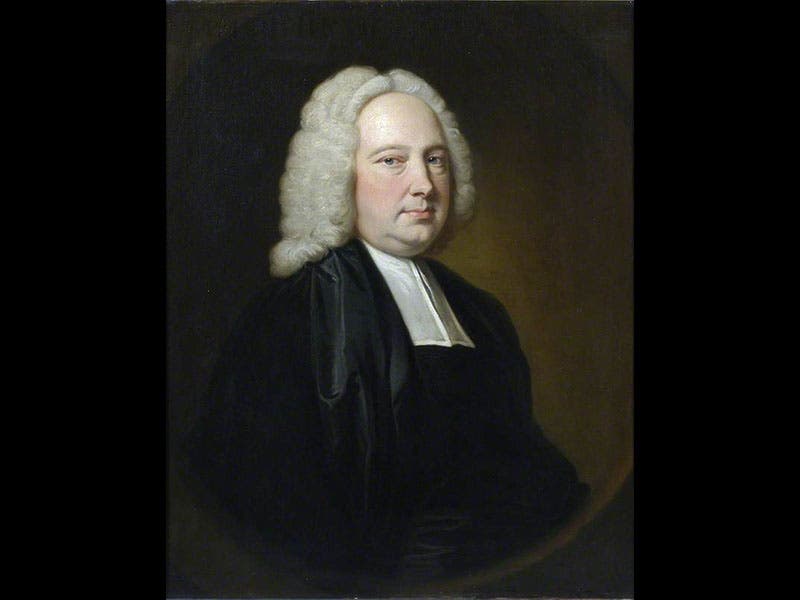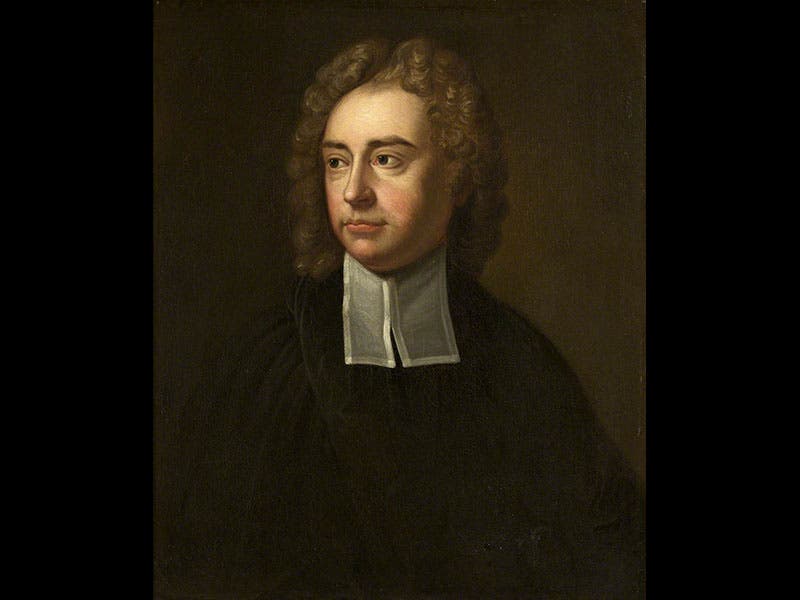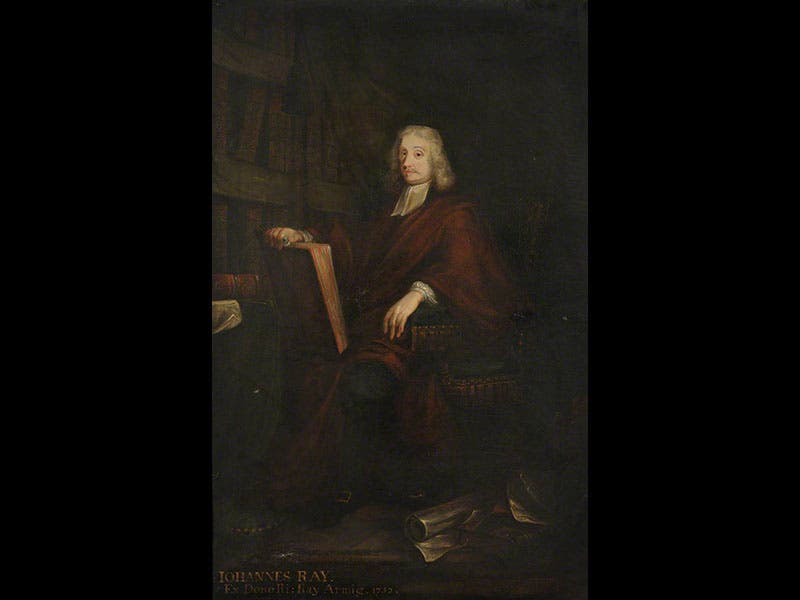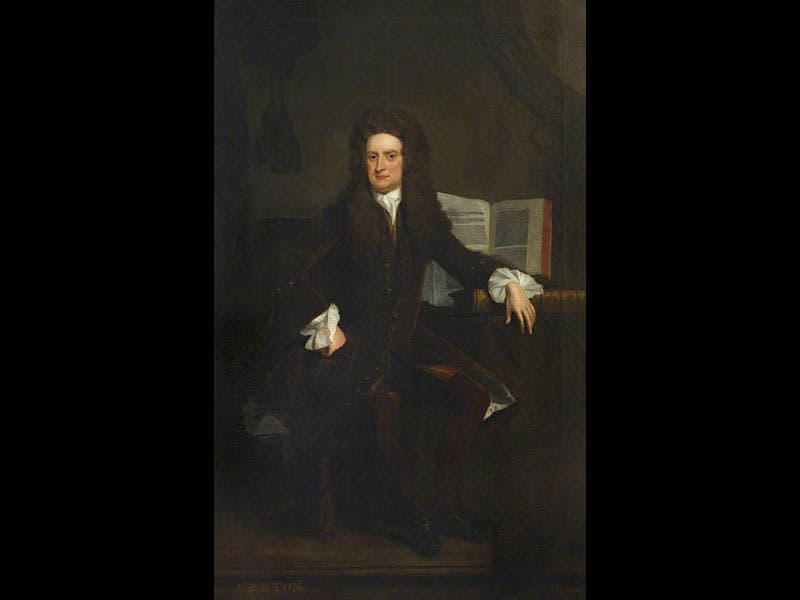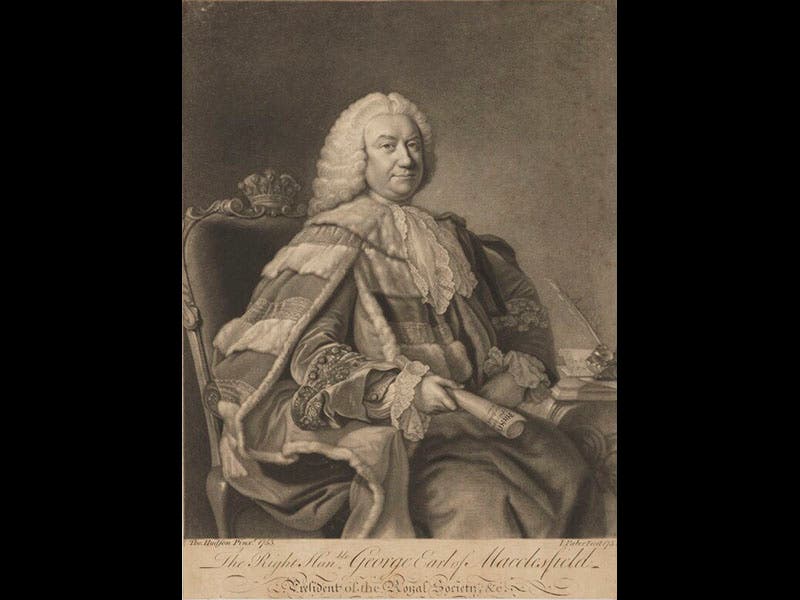Scientist of the Day - Thomas Hudson
Thomas Hudson, an English portrait painter, died Jan. 26, 1779, at age 78; his date of birth is not known. Hudson was the foremost portraitist of his day, which is to say, the 1740s and 1750s. Most of his portraits captured wealthy gentry and their families—dukes, earls, baronets and such—but not a few of his subjects were natural philosophers, which was fortunate, because in many cases the Hudson portraits are the only ones we have. For example, there are quite a few portraits of James Bradley, scattered about—he was England’s third Astronomer Royal—but they are all copies of an original done by Hudson that is in the Royal Society in London (first image). Hudson also painted Richard Bentley, the classical scholar who, with the help of Isaac Newton, gave the first Boyle Lectures in 1692 (second image); Stephen Hales, the investigator of gases who invented the pneumatic trough (third image); and John Ray, the botanist, taxonomist, and natural theologian (fourth image). He even painted an oil portrait of Isaac Newton that is now at Trinity College, Cambridge (fifth image). It is the least familiar of all the Newton portraits that survive, perhaps because Hudson painted it some 20 years after Newton died.
We also have one Hudson portrait—or rather a mezzotint after a Hudson portrait-- that portrays someone who was both a member of the peerage and a scientist: George Parker, 2nd Earl of Macclesfield (sixth image). Parker pursued astronomy and was instrumental in persuading the British parliament to institute the Gregorian Calendar Reform Acts of 1750-51, 169 years after the calendar had been established by Papal bull in Catholic countries. He and his father were also noted collectors of scientific books; their library has been dispersed through various auctions, and we have 9 books in our collections that came from the Macclesfield Library.
Hudson has 182 portraits in the National Portrait Gallery, and 100 more in various English museums and repositories, which we mined to find our 6 scientists. One of Hudson's students was Joseph Wright, another painter of scientific subjects who took up residence in Derby and gave us paintings such as A Philosopher Lecturing on an Orrery (1764). One day Wright will join Hudson on this website as another artist who, for a brief time, becomes a Scientist of the Day.
Dr. William B. Ashworth, Jr., Consultant for the History of Science, Linda Hall Library and Associate Professor, Department of History, University of Missouri-Kansas City. Comments or corrections are welcome; please direct to ashworthw@umkc.edu.


